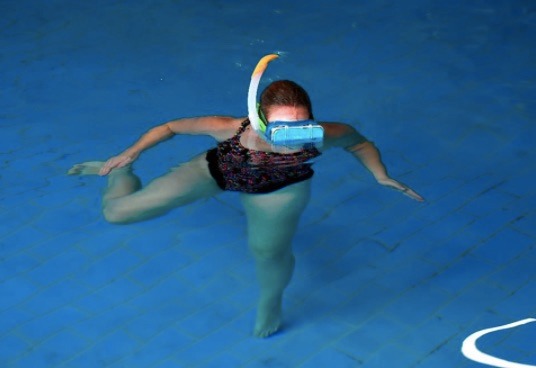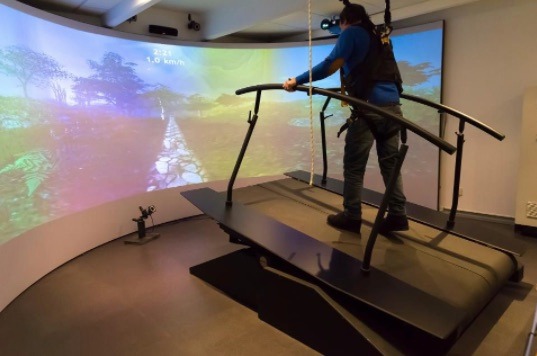The aging of the global population and increased awareness of consumer genetic testing and other technological advances will drive the genetic testing market to $10.3 billion by 2024.
Artificial intelligence is one of the main driving forces for the development of genetic testing. The combination of artificial intelligence and genomics data helps drive precision medicine and understand why our bodies respond to different drugs, viruses and the environment. Understanding these will help to change the way patients are diagnosed and treated. According to analyst firm Frost & Sullivan predicts that by 2021 within the next three years, an artificial intelligence system will generate $ 670 million worth in the health care industry.
The healthcare industry is likely to be one of the most promising areas for data-driven revenue. However, this is not only because of artificial intelligence, but also because of the overall confusion of medical data. The way patient data is stored is still fragmented, and most of the data is still stored in paper form. Therefore, even before the proliferation of various artificial intelligence methods, data collection, data unification, and data processing to support better healthcare methods still have great potential for development.
Blueprint Genetics, a genetic testing company based in Finland and San Francisco, has more than 100 employees and has accumulated $1.9 billion in equity from venture capital firms in Finland, Germany, Switzerland and San Francisco.
Tommi Lehtonen, CEO of Blueprint Genetics, said: "We are building a very complex software platform that addresses three different AIDS issues, providing scalable and high-quality genetic testing through fully transparent and traceable analytical methods. In other words, we are removing unreliable, hard-to-follow genetic testing results from DNA testing."
Lehtonen believes that regulation will not be an obstacle to the use and development of artificial intelligence in genetic testing.
“Different statistical analysis methods and artificial intelligence methods are gaining so much attention. I believe this industry will find the right direction with regulators. The factors that hinder growth may be such a large, high-quality data set. Now we There has been good progress in data sharing, but there is always a problem that truly pure high-quality data is difficult to accumulate quickly."
But without artificial intelligence, what will be the new world of genetics full of data? Lehtonen believes that it is likely to be similar to today's situation.
He said: "Genetics has tremendous opportunities. I think companies and research groups have only really started to research data recently. In addition, not all analyses require different artificial intelligence methods, and unsupervised artificial intelligence (unsupervised AI) is at least In the beginning, it may be challenging for a normative clinical environment. However, for example, in the DeepVariant project, I think the combination of biometrics and artificial intelligence may have a very bright future."
Artificial intelligence and behavioral change
Kiwi, a Canadian artificial intelligence startup, raised $2.5 million in venture capital for their artificial intelligence applications from FounderFuel, IncWell Venture Capital, Canadian Business Development Bank and Angel Investors, an app designed to help people quit smoking.
Kiwi calls it predictive care, and Kiwi's artificial intelligence and machine learning automatically learns the user's smoking habits, automatically tracks when the user smokes to determine their behavior patterns, and then predicts the time of the next smoking impulse. The app generates a smoking schedule for the user to gradually lengthen the interval between two cigarettes, helping the user to quit at their own pace. In this app called Cue, machine learning predicts when you might smoke next time, and if you extend the time interval you get rewards. Whenever smokers extend the time interval, they receive credits that can be converted to Amazon points. Kiwi said it plans to further expand the redeemable points in the future.
Artificial intelligence and diagnosis
In January 2018, the US Federal Drug Administration (FDA) designated Cognoa's artificial intelligence-based software as the new autism class II diagnostic medical device .
Cognoa CEO Brent Vaughan said that this opens the door to changing the way patients are diagnosed and treated. Cognoa's artificial intelligence learns how to improve initial diagnostic accuracy as a screening tool for diagnosing autism medical devices.
Vaughan said: "The use of artificial intelligence in the medical field has led to a lot of discussion. According to the FDA's decision, Cognoa's development path is very clear, that is, using our software as a medical device, using the power of artificial intelligence to fundamentally change from the self Behavioral health care standards that begin with autism. In this area where early diagnosis and early treatment may be critical to improving life, we are demonstrating how artificial intelligence can address unmet health needs in a unique way."
Vaughan said that in today's health care system, the average age of autism diagnosis is 4.1 years, and it gradually declines after the critical early intervention window that has the greatest impact on treatment. As early as 18 months of age, Cognoa's first application was clinically validated to identify whether a child has autism.
Augmented reality, virtual reality and mixed reality in the medical field
Todd Richmond, member and director of the USC Mixed Reality Lab, said that virtual reality, augmented reality and mixed reality (VAMR) technology will benefit in some aspects of this new medical paradigm.
“From medical and post-operative care to physical and psychological rehabilitation, VAMR technology has a wider range of applications in the medical and behavioral fields, including patient training and lowering preoperative pressure, from medical and post-operative care to physical and psychological rehabilitation. Helps improve the overall patient experience and may improve patient report outcomes."

On October 31, 2017, at the 'S Heeren Loo Disabled Care Center in Apeldoor, the Netherlands, a therapist is testing a new type of cutting-edge waterproof virtual reality (VR) glasses that will play dolphin movies. Swimming with wild dolphins seems to be only a dream, and dolphins in the pool are becoming more and more controversial, and environmentalists see it as a cruel act. The Dutch non-profit organization Dolphin Swim Club believes that they have found a way to provide an immersive experience through VR technology, making people, especially disabled people, more immersive to experience this enjoyable experience.
According to Richmond, one of the biggest challenges in medicine is patient compliance.
“All advanced imaging, robotic surgery, and drug interventions are marginalized if patients do not adhere to treatment options. The proliferation of personal health sensors complicates this issue because of the individual’s informal wearables and health records, and The information is beginning to mix, and for those who have been plagued by the status quo, information is growing more and more, but there is less and less help for them."
Richmond believes that VAMR is delivering promises in some way in this area.
“First, VAMR provides a new medium for delivering information. The key is that data can tell stories to patients, tell people how to use information, how to learn, and how to change behavior. VAMR represents a kind of help data storytelling. And changing new ways of life."
“Secondly, VAMR can be an integral part of the broader concept of gamification of physical health and physical and mental health. We have seen the combination of new technologies and games for injuries – especially stroke rehabilitation – As a result, VAMR and gamification turn terrible physical therapy and healing into a real game that allows patients to participate in the process and maintain treatment for longer periods of time."

The Rossetti Rehabilitation Centre in France has a gait real-time analytical interaction laboratory (GRAIL) that focuses on gait analysis and training solutions. The solution uses a dual aisle with a variety of instruments, motion capture systems, three cameras and EMG, all in sync with the VR environment.
One area where VAMR will have the biggest impact is digital therapy, says Richmond. VAMR technology can be used to support treatment
Treatment of various psychological problems such as post-traumatic stress disorder, fear of heights, anxiety, depression, Alzheimer's disease and dementia.
“Medical VAMR can help with the treatment of physical illness,†Richmond said. A research team at the University of Washington has tried to use VR to treat pain in burn patients (distraction treatment), and the results are encouraging. In the absence of traditional treatments (considering the limited mobility of stroke patients, thus limiting their treatment options), VR-supported interactive, engaging physical rehabilitation programs have been shown to improve patient recovery rates."
“As far as I am concerned, VR excites me not by copying the real world situation, but by reshaping the subconscious and unconscious world in a way that humans can explore their own minds and positively influence their daily lives. At this point, it is not difficult to see the huge potential of the medical VAMR."
But according to Andrew Chapman, head of digital health at Digital Catapult in London, these companies need to overcome the obstacles.
Chapman said: "The two biggest obstacles to overcome are the acceptance by regulators and the adoption of health care professionals (HCPs). The early successes were mainly designed by those who have a mature management framework and work closely with HCP. The product company is pushing."
Chapman said: "With immersive technologies such as AR and VR, the current high cost and complexity of hardware and the lack of regulatory guidance further plague this situation. "By 2018, with the release of low-cost independent hardware And with rapid proliferation, we will see the obstacles of the former - but the regulatory breakthrough will take longer. â€
Chapman believes that there is still a long way to go before immersive technology can be used before we see presupposed digital therapies.
He said: "Academia has some examples in the field of mental health, and there are some excellent applications in medical training such as TouchSurgery, Medical Realities and Pearson Immersive. "We have seen the early application of artificial intelligence in the medical field, for example The use of machine learning in the field of radiology/pathology is rapidly evolving, and artificial intelligence is closer to the market than VR/AR solutions. â€
Deana Rhoades, head of automation consulting at NTT DATA Services, said the biggest obstacles to adopting these technologies are related to trust and loyalty.
“Although Millennials are less loyal to specific providers, they are more concerned with usability and convenience; older generations are very loyal to doctors and prefer to face treatment. The technology community must overcome the need for virtual agents to replace providers. Opinion – Conversely, virtual agents are meant to make providers better serve patients.â€
Jiangsu Tiera Biotechnology Co., Ltd , https://www.tierabio.com